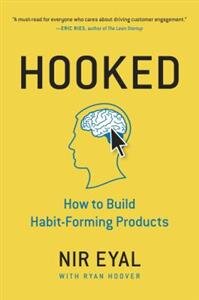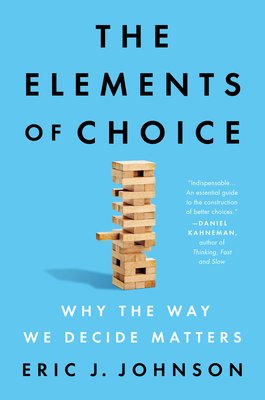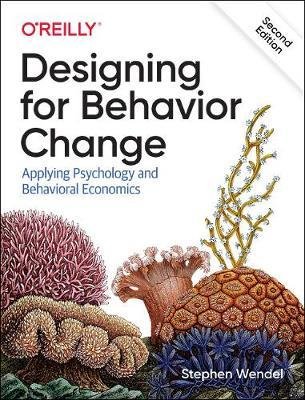Principles Books
Principles
The analyses presented here are grounded in foundational principles derived from behavioral and social sciences, including psychology, sociology, behavioral economics, human-computer interaction, and media theory. The individual nudge analyses draw upon these disciplines to provide insights into the underlying mechanisms. These books have informed this research.
The Action Bias refers to the tendency to prioritize action over inaction, regardless of whether such action is likely to have a positive outcome. This tendency manifests in a compulsion to act, even when evidence suggests that inaction might be a more prudent course. Individuals often feel compelled to take steps, irrespective of their potential efficacy, driven by a belief that inaction is inherently negative.
EXAMPLES
Action Bias
Affect Heuristic
The Affect Heuristic is the cognitive shortcut that relies on emotional responses to guide decision-making. While often efficient, it can also lead to choices that diverge from rational analysis. Gut feelings and overall impressions can be valuable in making quick judgments, but they may not always align with optimal outcomes. This heuristic highlights the complex interplay between emotion and reason in human decision-making.
EXAMPLES
Ambiguity Effect
The Ambiguity Effect is the tendency to prefer options with known outcomes over those with unknown possibilities. We often avoid choices where information is missing, even if it might lead to a better result. This shows our natural preference for certainty over uncertainty.
EXAMPLES
Anchoring Bias
We often rely too heavily on the first piece of information we encounter when making decisions. This initial piece of data acts like an anchor, influencing our subsequent judgments and estimates. As a result, we may undervalue new information that contradicts our initial impression, leading to less than optimal choices.
EXAMPLES
Attentional Bias
Our minds are constantly bombarded with information. To manage this overload, we naturally focus on certain things while ignoring others. This selective attention can be influenced by both external factors like sights and sounds, and internal factors like thoughts and feelings.
EXAMPLES
Attention Ratio
In a given moment in the user journey - the ratio of the number of actions that can be taken : to the number of actions you want a user to take should be 1:1. The user is more likely to focus on an action, consider its implications and follow through with a good decision where there is only one action that can be taken in each moment.
Examples
Authority Bias
People tend to overvalue the opinions of those perceived as experts. We often accept information as accurate without critical evaluation simply because it comes from an authority figure. This bias can be triggered by superficial cues of authority, such as titles or credentials, rather than actual expertise.
EXAMPLES
Bias Blind Spot
The Bias Blind Spot is the tendency to overestimate the impact of biases on others while underestimating their influence on oneself. People often believe they are less susceptible to biases than those around them.
EXAMPLES
All on this site
Bandwagon Effect
The Bandwagon Effect, also called the ‘herd mentality’, is the tendency of people to align their beliefs and behaviors with those of a group they value. This psychological phenomenon drives humans to do something primarily because other people are doing it, regardless of their own beliefs, which they may ignore or override especially in social contexts.
EXAMPLES
Bounded Rationality
Bounded Rationality is a human decision-making process in which we tend to go with the ‘good enough’ option, rather than the ‘best’ option. This is because there are limits to our thinking capacity, available information, and time. Humans are therefore not perfectly rational, but rather use a mental process called ‘satisficing’ to make rational decisions within bounds.
EXAMPLES
Choice Overload Effect
Choice Overload, also known as overchoice, choice paralysis, or the paradox of choice, describes how humans get overwhelmed - leading to poor or no decision making at all - when they are presented with a large number of options to choose from. Research has shown that overchoice is associated with dissatisfaction, decision fatigue, going with the default choice, and even choice deferral— the tendency to avoid making any decision in that moment altogether.
EXAMPLES
Commitment Bias
Commitment Bias, also known as the ‘escalation of commitment’, is the tendency to be consistent with what we have done or said we will do in the past, particularly if it was public. We tend to remain committed to such past behaviors even if they do not have desirable outcomes.
EXAMPLES
Declinism
Declinism is the tendency to remember the past as better than it was, and expect the future to be worse than it will likely be. This leads to the consistent belief across generations that things are worse now than they used to be. Declinism is often seen in cultural perceptions and beliefs about the overall state of a country, society, or institution.
EXAMPLES
Default Effect
The Default Effect is the tendency for people to stick with the pre-selected option when making a choice. This occurs when there is no active decision made, and the default becomes the chosen path. Defaults are particularly influential in situations where people face uncertainty or inertia.
EXAMPLES
Endowment Effect
The Endowment Effect is a cognitive bias where people consider something to be of higher value merely because they own it. This effect occurs because ownership increases the perceived worth of an item, making individuals reluctant to part with it even if they would not necessarily buy it at the same price. It highlights the emotional attachment and overvaluation that ownership can create.
Examples
Framing Effect
The Framing Effect is the tendency for information to be interpreted differently based on how that information is presented. For example, people might make decisions based on whether options are framed positively or negatively. Identical information can become more or less appealing depending on which aspects are emphasised.
EXAMPLES
Fresh Start Effect
The Fresh Start Effect is the tendency to use temporal landmarks, such as New Year's or birthdays, as psychological markers that signal a fresh start. These moments create a mental separation between the past and future, fostering a sense of renewal and motivation. By framing goals and behaviors within the context of these landmarks, individuals are more likely to initiate positive changes and build lasting habits.
EXAMPLES
Functional Fixedness
Once we understand how something works, it can be challenging to imagine alternative uses. Our minds often become locked into seeing objects and solutions in specific ways. As a consequence, people tend to develop an inability to use an product in more ways than it is traditionally understood to be used.
EXAMPLES
Goal Gradient Effect
As people move closer to a goal, they speed up their efforts to reach it. This means that perceptions of progress on the path to a goal often impact human motivation to pursue the goal itself. Effectively, closing in on a goal makes people focus more on the distance left to the goal, not on the distance they have already come.
EXAMPLES
Halo Effect
Our overall impression of someone or something can affect how we see their other qualities. For example, a good first impression can make us think they have more positive traits. This tendency to generalize from one good attribute can influence our judgments in many areas, like personal relationships or brand perception. A specific form of the Halo Effect is the ‘attractiveness stereotype’.
EXAMPLES
Hard-Easy Effect
We often misjudge how hard tasks will be. We tend to think we'll succeed at hard tasks more than we actually will and underestimate how easy tasks really are. This gap between what we think and reality can affect how we plan and use resources. This is called the Hard-Easy Effect, also known as the ‘discriminability effect’ or the ‘difficulty effect’.
EXAMPLES
Hot Hand Fallacy
The hot-hand fallacy is the belief that a person who has been successful in a series of events will keep succeeding. This mistaken belief causes us to overestimate their chances of future success, even when the results are random or unrelated.
EXAMPLES
Hyperbolic Discounting
Also called ‘present bias’, this is when people prefer smaller rewards now over larger rewards later. Essentially, the further away a reward is, the less value it has to us. We choose immediate pleasure over waiting for a bigger reward. This tendency affects how we seek and prefer rewards over time.
EXAMPLES
Illusion of Choice
Offering a multitude of options can create the perception of abundance, which may initially attract decision-makers. However, an excessive number of choices can overwhelm, often leading to decision paralysis. This phenomenon is known as the Illusion of Choice, because when faced with too many options, decision-makers are unable to effectively evaluate and compare alternatives, hindering their ability to make a rational and informed choice.
EXAMPLES
Illusion of Control
The Illusion of Control is a cognitive bias wherein individuals overestimate their capacity to influence or predict outcomes. This inflated sense of control often leads to suboptimal decision-making as people may prioritize strategies based on perceived influence rather than objective probability. Even in the face of random events, individuals may resort to superstitions or magical thinking to maintain a belief in their ability to exert control.
EXAMPLES
In-Group Bias
In-group bias refers to the inclination to favor individuals who belong to one's own social group clan, tribe, community, etc.. This preferential treatment can manifest in various ways, including evaluations, resource allocation, and interpersonal interactions. Remarkably, this bias can emerge even when groups are formed arbitrarily, demonstrating the powerful influence of social categorization on human behavior and making group membership effectively meaningless. People consistently give preferential treatment to those in their in-group, and deny such treatment to those in their out-group. People can express such preferences in their evaluation of others, in how they allocate resources, and in many other ways.
EXAMPLES
Interference Effects
Cognitive interference occurs when competing mental processes impede the efficiency and accuracy of a task. This phenomenon primarily affects working memory, which simultaneously processes multiple pieces of information. When information is incongruent or conflicting, resolving the discrepancies demands additional cognitive resources, consequently diminishing overall performance.
EXAMPLES
Loss Aversion
Individuals tend to perceive losses as twice as impactful as equivalent gains. This loss aversion often leads to a strong preference for avoiding losses over acquiring comparable gains. Such an asymmetrical valuation of outcomes can result in irrational decision-making and suboptimal choices.
EXAMPLES
Media Equation
Individuals often anthropomorphize technology, attributing human-like qualities to computers and other digital entities. This tendency manifests in social interactions with media, characterized by politeness, ascribed personality traits, and even gender attribution. Such responses are largely subconscious and occur more frequently than people typically recognize.
EXAMPLES
Motivating Uncertainty Effect
Individuals are more likely to be motivated by goals with uncertain rewards. Recent research indicates that uncertainty surpasses certainty in driving goal-oriented behavior, leading to increased effort, expenditure, and overall enjoyment during the pursuit.
EXAMPLES
Noble Edge Effect
Companies seen as being good and doing good have a stronger positive impact on consumer and user decision making. Products of caring companies are seen as better. Consumers and users increasingly look up to companies that demonstrate social responsibility in a genuine and consistent manner. They tend to reward such companies with their loyalty, money and goodwill.
EXAMPLES
Observer Expectancy Effect
The Observer Expectancy Effect, also known as the experimenter expectancy effect, highlights the potential influence of an observer's expectations on the behavior of those being observed. This bias is particularly relevant in research, where researchers may unconsciously convey expectations to participants through subtle cues known as demand characteristics. These cues can inadvertently influence participant behavior and study outcomes.
EXAMPLES
Optimism Bias
Humans exhibit a strong tendency towards optimism, often underestimating the potential for negative outcomes and overestimating the likelihood of positive ones. This cognitive bias, known as Optimism Bias, represents a disparity between anticipated and actual future events. While optimism can be a powerful motivator, driven by the human desire to avoid pain and seek pleasure, it is crucial to temper this inclination with a realistic assessment of possibilities.
EXAMPLES
Precommitment Device
A precommitment device is a strategy designed to enforce consistent behavior by restricting future options. By committing to a specific course of action in advance, individuals can overcome procrastination and increase the likelihood of achieving their goals. This approach reinforces a positive self-image, a fundamental human motivation. Numerous behavioral interventions leverage precommitment to drive action and facilitate personal change.
EXAMPLES
Peak End Rule
People tend to evaluate experiences based on their peak and end points, rather than on the overall sum of the experience. This suggests that individuals construct narratives of their past by focusing on these pivotal moments, often downplaying or disregarding less intense or impactful parts of the experience.
EXAMPLES
Priming Effect
Priming is a cognitive process in which exposure to one stimulus unconsciously influences a person's response to a subsequent stimulus. For instance, an individual previously exposed to the word "yellow" might exhibit a heightened ability to recognize the word "banana" when presented with a list of fruits.
EXAMPLES
Projection Bias
Projection bias occurs when individuals mistakenly assume their future preferences, values, and behaviors will closely resemble their current ones. This cognitive distortion can lead to short-sighted decision-making as people prioritize immediate needs and desires over potential future changes. For instance, overbuying groceries while hungry or choosing a career path based solely on current interests can be attributed to this bias.
EXAMPLES
Pygmalion Effect
External expectations significantly influence human performance. The Pygmalion effect posits that higher expectations lead to improved outcomes. This phenomenon suggests a self-fulfilling prophecy dynamic, where individuals rise to meet the standards set for them. Such expectations can operate as a positive feedback loop, enhancing performance in both human-to-human and human-technology interactions.
EXAMPLES
Reactance
Individuals experience a strong motivational drive when their freedom or autonomy is threatened or restricted. This psychological reactance can lead to behaviors aimed at restoring perceived freedom. Consequently, overly restrictive or coercive interventions may inadvertently provoke the opposite of the desired outcome. The intensity of reactance is influenced by the perceived importance of the threatened freedom and the perceived magnitude of the restriction.
EXAMPLES
Reciprocity
Reciprocity is a social norm that compels individuals to return favors, gifts, or services they have received. This psychological principle is rooted in a sense of obligation, often driving individuals to reciprocate, even when the returned action is disproportionate to the initial benefit.
EXAMPLES
Reciprocity Decay
Reciprocity is a powerful persuasion principle that leverages the human inclination to repay favors, gifts, or services received. However, this sense of obligation diminishes over time. To maximize the effectiveness of a reciprocal request, it is crucial to time it closely after the initial benefit has been conferred.
EXAMPLES
Scarcity
Scarcity is a fundamental principle of persuasion, positing that limited availability enhances the perceived value of an item. Whether products, services, information, or experiences, scarcity creates a sense of urgency and desirability, driving increased demand.
EXAMPLES
Self Determination Theory
Self-Determination Theory (SDT) is a comprehensive framework for understanding human motivation and personality, positing that individuals are inherently motivated to grow and develop. This growth is facilitated by three fundamental psychological needs: autonomy, the need to feel in control of one's actions and decisions; competence, the need to feel effective and capable in one's endeavors; and relatedness, the need to feel connected and supported by others. SDT emphasizes the importance of these needs in fostering intrinsic motivation, which is driven by internal rewards rather than external pressures. When these needs are met, individuals are more likely to be engaged, committed, and resilient.
Social Proof
Social proof is the tendency for individuals to conform to the behaviors of others within a given context. People often mimic the actions of peers, seeking to align their behavior with perceived norms. This influence is particularly pronounced in ambiguous or unfamiliar situations where individuals lack clear guidance. Consequently, group behaviors can vary significantly across different cultures. In certain circumstances, social proof can exert a more potent influence on behavior than explicit rules or regulations.
EXAMPLES
Sunk Cost Effect
The Sunk Cost Effect describes the human tendency to continue an endeavour once we have already invested time, effort or money into it. Once a feeling of sunk cost kicks in, people will continue to put effort or investment into the project, becoming less sensitive to whether ongoing costs outweigh the final benefits.
EXAMPLES
Temptation Bundling
A method of coupling behaviors humans enjoy with less desirable behaviors that they need to accomplish. Desirable, pleasurable behaviors - such as watching your favourite streaming content - are motivating in themselves and take up your full attention. By coupling this with an unpleasant but necessary behavior such as exercising, it is more likely that you will reduce resistance to doing the latter and accomplish more of it.
EXAMPLES
Transparency Effect
People can be nudged effectively even when they are aware that they are being nudged. Contrary to popular belief, knowledge of the behavior design intervention does not reduce the impact on the end user or customer. Which means there need not be a trade-off between transparency and effectiveness of an intervention.
EXAMPLES
All on this site
Unintended Consequences
Economic decisions made by humans may have effects that are unexpected. Which means there can be outcomes of a purposeful behavior that cannot be intended or foreseen beforehand. This may distort consumer or producer behavior in a way that was not expected when designing an intervention. Unintended consequences may be positive or negative.
EXAMPLES
Books
Influences and Acknowledgments
The principles and insights presented in this resource are deeply indebted to the groundbreaking work of numerous behavioral scientists. We extend our sincere gratitude to the authors and thinkers whose research has paved the way for understanding the intricacies of human behavior. While the following books provide a foundational overview, countless academic papers and articles have also contributed significantly to the development of this work.










































